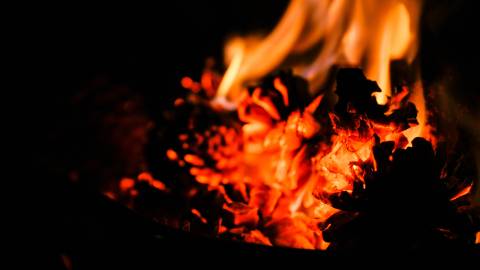
Wildfire Prevention & Campfire Safety
Posted: 06/29/23
"Only you can prevent forest fires!" - Smokey the Bear
Wildfires are a real threat to the Big Bear community and the San Bernardino National Forest. Unfortunately, most wildfires are the result of people being irresponsible and failing to follow fire prevention laws. Please read further for information on illegal fire activity and tips to be fire safe.
Fire Safety Laws in Big Bear
Fireworks Are Prohibited!
From Big Bear Lake Fire Department: Personal fireworks are illegal throughout Big Bear Valley, including “safe and sane” fireworks. In addition, all fireworks that explode, shoot into the air or move along the ground are termed dangerous and are illegal anywhere in California. If someone is seen using personal fireworks, call (909) 866-7566 or text (909) 731-4887 immediately.
From San Bernardino County Fire Protection District: Possession of any type of fireworks is against the law in any unincorporated area of San Bernardino County. In the event a fire occurs due to the unsafe use of fireworks, the responsible persons are likely to face criminal charges and be held liable for damages.
Fire Safety Laws in the National Forest
The following acts are prohibited on the San Bernardino National Forest.
- Carelessly or negligently throwing or placing an ignited substance (like cigarettes) that may cause a fire.
- Smoking, except within an enclosed vehicle or building or developed recreation site.
- Operating an internal combustion engine anywhere other than on paved, gravel, or dirt National Forest System roads.
- Using an explosive or possessing, discharging or using any kind of firework or pyrotechnic device.
Campfire Safety in Big Bear
Nothing completes the camping experience like a crackling campfire. However, the dangers of mishandled and illegal campfires are real and can have devastating effects on our mountain community and National Forest.
"We know everyone enjoys having campfires while recreating outdoors...however, the public needs to be mindful of the conditions and where they are wanting to have campfires, in order to be safe." San Bernardino National Forest Fire Chief Jaime Gamboa
Where Campfires Are Permitted
The San Bernardino National Forest has restrictions in place regarding campfires. Wood and charcoal campfires are allowed only in agency-provided fire rings at:
- Developed Campgrounds - Campfire permit required.
- Yellow Post Sites
- Picnic Areas - In provided BBQ grills
- You must obtain a California Campfire Permit
- Campfires are not allowed anywhere else at any time of the year.
It is illegal to build a fire while camping remotely (outside the above bulleted areas). Additional restrictions on campfires can be implemented as fire danger increases, always check with the local Ranger Station. Violating fire restrictions prompts a mandatory court appearance and is punishable by fine and/or imprisonment.
Extinguishing Campfires
Extinguishing your campfire properly and completely is crucial to avoiding wildfires. Leaving a fire pit smoldering is extremely irresponsible. Embers can smolder underground and ignite dry forest matter and tree roots. The California Dept. of Forestry and Fire Protection recommend the “Drown, Stir and Feel” method:
- Drown - Drown the fire with water.
- Stir - Stir the fire area with a shovel to wet remaining embers. Turn wood and coals over and wet all sides. Move dirt onto the fire site and mix thoroughly to fully smother it.
- Feel - Feel the area with the back of your hand to ensure nothing is still burning.
Buy It Where You Burn It
When building a campfire, use or purchase firewood from the area you're in. Firewood from other areas can harbor insects that are non-native to our National Forest. Bringing invasive species into new locations can kill large numbers of trees and shrubs. For this reason, 'Buy It Where You Burn It!'
Let's keep the San Bernardino National Forest - and all forests - safe from accidental wildfires and damage from invasive species. Be an ally and know before you go, happy camping!